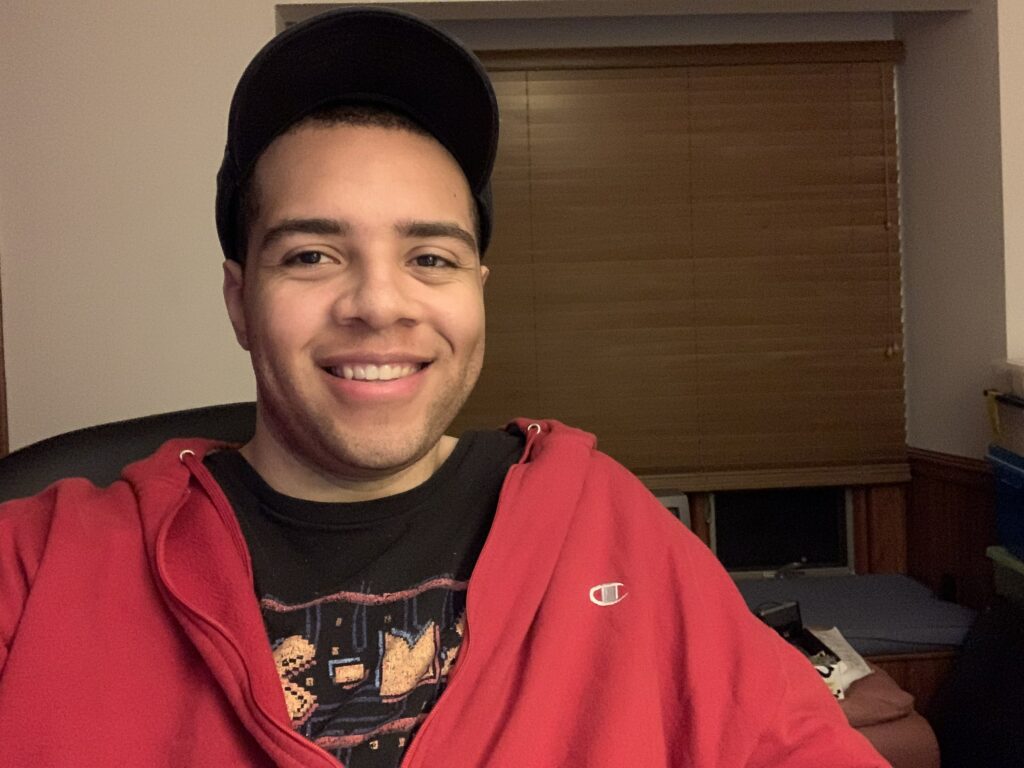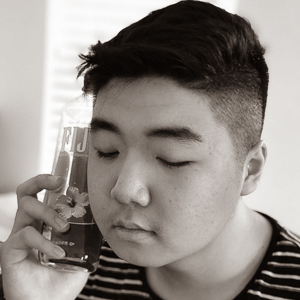
Saylee Bhide is a Technical Artist who wants to work at the intersection of Computer Science and Art. She has a background in programming and is currently working towards specializing in Rigging and Tool development. She is also a traditional and digital artist who now often delves into the world of illustrations.

Zhongyan (Josh) Li studied cognitive science at UC Berkeley, along with many film classes that put great emphasis on critical analysis. He has a sharp sense at integrating his taste in film and literature into game design and storytelling. He strives to become a great game design & creative director someday and add a Chinese voice in the ever expanding game industry.

Andrew McLamb is a game designer who knew early on that he wanted a career in video games. He choose to study at the ETC because he attended Carnegie Mellon’s National High School Game Academy program the summer of 2014 and he decided then and there that he would need to return. It is his ambition to create games that bring an equivalent level of joy to others that he experienced playing games growing up. Andrew also enjoys board and card games, tennis: (table and regular), and knows how to juggle.

Em Tyminski is a costume and character designer with a background in theatrical design and art. For Em, creating characters is a part of telling a larger story that ultimately connects with the audience, whether it be through a theatre, film, video games, or animation.


Sheenu You is an animator and digital illustrator who works with both 2D and 3D mediums. He is interested in game design and the game development process, and strives to improve his character rigging skills along with his other abilities. He hopes to work as an artist in the game industry or in film/television. Like the monkey he is, he’s always willing to learn new things.
Instructors

Chris Klug
Trained as a theatrical lighting designer, Chris Klug began his career in the arts working on Broadway, in regional theater, and toured with various 70’s rock n’ roll bands. Then, at the invitation of a fellow photographer, Chris transitioned into a career as a Game Designer. Starting with Simulations Publications, Inc., in 1981, he was first Assistant Designer on Universe (a sci-fi role playing game), then was Lead Designer for the 2nd edition of DragonQuest (a fantasy RPG), Horror Hotel (something’s lurking in the shadows of an old Victorian mansion) and Damocles Mission (a sci-fi strategy game about exploring an alien artifact). While at SPI he edited the role playing section of Ares magazine.
When TSR bought SPI in 1982, Chris and the rest of the SPI staff moved on to start-up Victory Games. While at Victory, Chris managed the role playing games product line, and designed the James Bond 007 role playing game (a winner of a H.G. Wells RPG Game of the Year Award as well as the winner of TSR’s RPGA award). This game has been hailed as one of the first RPGs to emphasize story and narrative.
He also designed a number of adventures based on the movies (Live and Let Die won RPG Adventure of the Year), followed up by a solitaire board game — Open Fire — based on Victory’s Ambush system.
After a time as a Macintosh consultant to New York City’s magazine publishing industry, Chris moved on to freelance video game design and worked for SegaSoft, TSR, Hasbro Interactive, 3W, THQ, Simon and Schuster Interactive, Target Games, h2o Interactive, and Gizmo Games In that industry Chris has more than a dozen titles to his credit, including “RPG Story of the Year” award for Aidyn Chronicles: First Mage. Some of his computer game credits include Star Trek DS9: Dominion Wars, Europa Universalis, Duke Nukem: Time to Kill, and Diamond Dreams Baseball.
Chris then joined EA’s Westwood Studios full-time as a content and story specialist, leading the narrative team for EA’s first MMO, Earth & Beyond, for which Chris later became Creative Director.
Chris then became Creative Director at Cheyenne Mountain Entertainment in Mesa, Arizona, designing Stargate Worlds, an MMO based on the Stargate television franchise. Chris also worked closely with Brad Wright and the Stargate writing staff on efforts to sync up the evolving story in both the TV series as well as the MMO.
While teaching at the ETC, Chris secured an $8 million investment in an innovative social game / mobile game platform, Dream Wedding Planner, and launched the product in the spring of 2014.
In addition to teaching story, game design and creative writing at CMU, Chris consults with game publishers around the world.
Chris is a playwright and member of the Writer’s Guild of America West.

Ricardo Washington
Ricardo serves as an adjunct faculty member at the Carnegie Mellon University’s Entertainment Technology Center. He specializes in giving the students instruction and guidance in art related areas of their program.
Ricardo was a faculty member at the Art Institute of Pittsburgh in the Game Art and Design department. He taught classes in 3D art, specializing in modeling and texture creation. He also taught game design, animation, and production classes. Ricardo helped to improve the academic culture with consistent and robust service on various committees and boards, organizing multiple events, updating classes and curricula, and connecting with the community in Pittsburgh. Before AIP he worked for small game company with a great team. He also did freelance game art, focusing on creating content for games for training. He worked with Simcoach games during this time to create content for interactive game based safety training material.
Before his life as a digital artist, Ricardo worked as a research specialist in the Neurobiology department at the University Of Pittsburgh School Of Medicine. As a lab assistant he spent many hours conducting in the trenches bench top science and microscope work. It was a productive time resulting in four publications.
Ricardo uses his skills and knowledge to teach students outside of the traditional academic environment. He developed and implemented the video game design programs for a local nonprofit Homewood Children’s Village and the Carnegie Library in East Liberty. He has also served as a volunteer mentor with the Carnegie Museum of Natural History EnergyNet and Game Jam programs.
